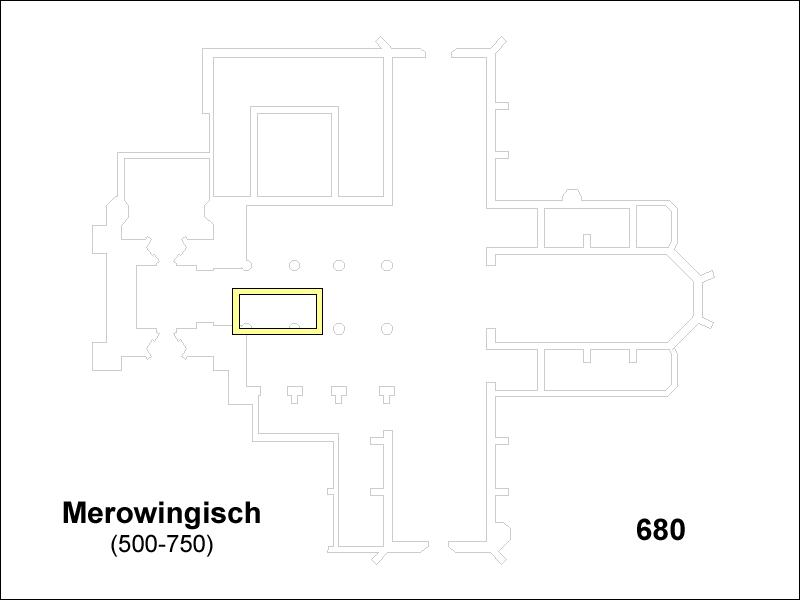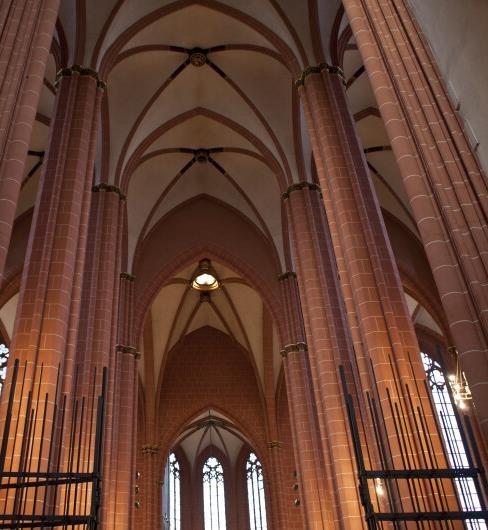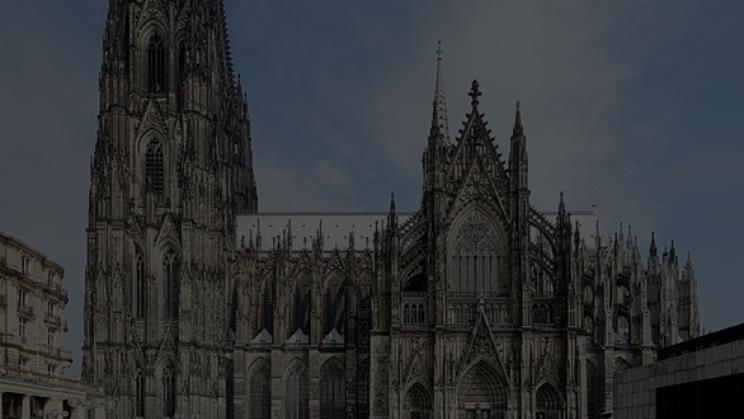
4 minute read
Germany Gothic Architecture
from Gothic Architecture
Germany Gothic
• Emphasis was placed on creatinghall churches, which were built with a long section where people could sit, called the nave. On each side of the nave there was a lower aisle; the nave and the isle were fashioned to be the same height. Examples of these hall churches in Germany include St. Martin’s, Landshut.
Advertisement
• German designs used double choirs, that is, churches with apses (a semicircular recess covered with a hemispherical vault or semi-dome). Typically, they were situated at both the east and west ends of the building. Details incorporated into designs were borrowed from Italian design.
• Moldings used were simple and basic. The most internal distinctive feature of German Gothic design was the great height of the triforium, a shallow gallery of arches within the thickness of inner wall, which stands above the nave. German designers experimented with geometrical figures and lines, which mostly translated into elaborate tracery for windows and paneling. German architects created a large collection of brick buildings in their medieval designs, a collection that is not seen as much in other European countries. Part of this is attributed to the fact that brick was an easy natural resource for builders.
• Although buildings in Germany possess many universal structures specific to Gothic Architecture, many of the buildings possess a distinct national character that is not found in other European countries.
The Cologne Cathedral
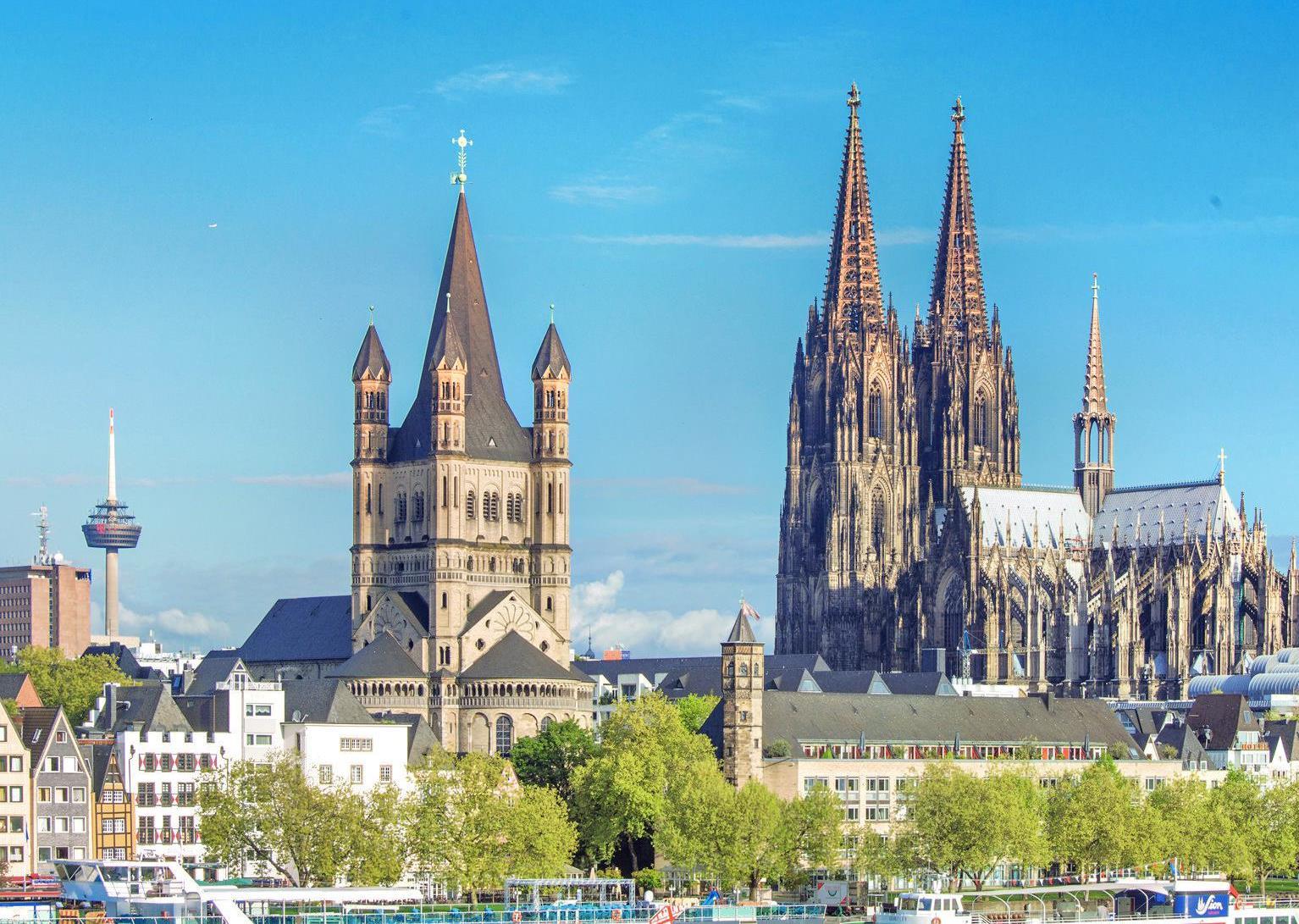
The Cologne Cathedral
The mighty Gothic cathedral of Cologne is the seat of the Archbishop of Cologne. The entire structure took around 600 years to build. Cologne Cathedral is the largest Gothic cathedral in Northern Europe. It also has the second tallest spires which are built in an entirely Germanic Gothic style.
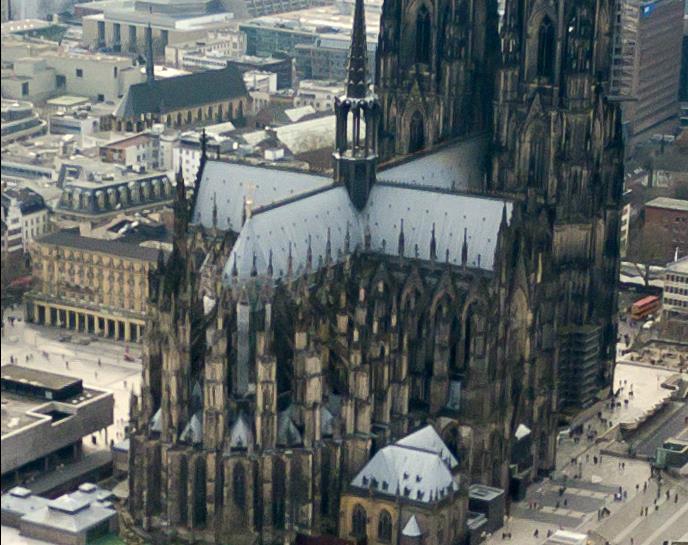
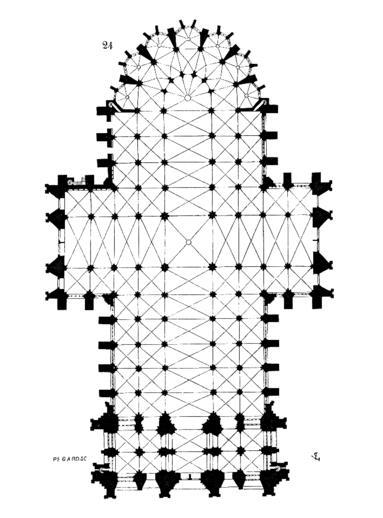
The design of Cologne Cathedral was based quite closely on that of Amiens Cathedral in terms of ground plan, style and the width to height proportion of the central nave. The plan is in the shape of a Latin Cross, as is usual with Gothic cathedrals. It has two aisles on either side, which help to support one of the very highest Gothic vaults in the world, being nearly as tall as that of the Beauvais Cathedral, much of which collapsed.

• Externally the outward thrust of the vault is taken by flying buttresses in the French manner. The eastern end has a single ambulatory, the second aisle resolving into a chevet of seven radiating chapels.
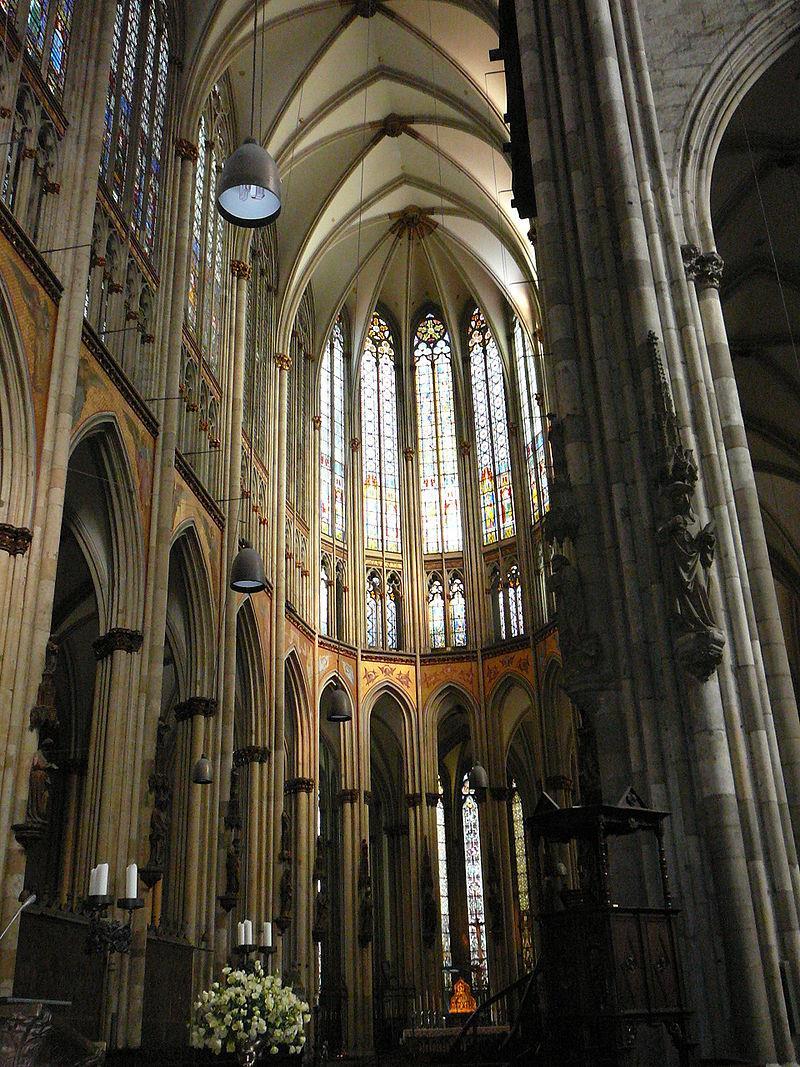
Internally, the medieval choir is more varied and less mechanical in its details than the 19thcentury building. It presents a French style arrangement of very tall arcade, a delicate narrow triforium gallery lit by windows and with detailed tracery merging with that of the windows above. The clerestory windows are tall and retain some old figurative glass in the lower sections. The whole is united by the tall shafts that sweep unbroken from the floor to their capitals at the spring of the vault. The vault is of plain quadripartite arrangement.
Embedded in the interior wall are a pair of stone tablets on which are carved the provisions formulated by Archbishop Englebert II (1262–67) under which Jews were permitted to reside in Cologne

The most celebrated work of art in the cathedral is the Shrine of the Three Kings, It is traditionally believed to hold the remains of the Three Wise Men. The shrine takes the form a large reliquary in the shape of a basilica church, made of bronze and silver, gilded and ornamented with architectonic details, figurative sculpture, enamels and gemstones. The shrine was opened in 1864 and was found to contain bones and garments.
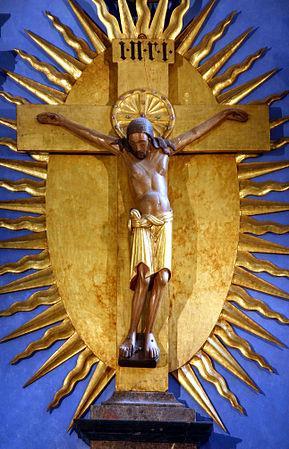
Near the sacristy is the Gero-Kreuz, a large crucifix carved in oak and with traces of paint and gilding. Believed to have been commissioned around 960 for Archbishop Gero, it is the oldest large crucifix north of the Alps and the earliestknown large free-standing Northern sculpture of the medieval period.

The main entrance shows the 19th century decoration

Frankfurt Cathedral
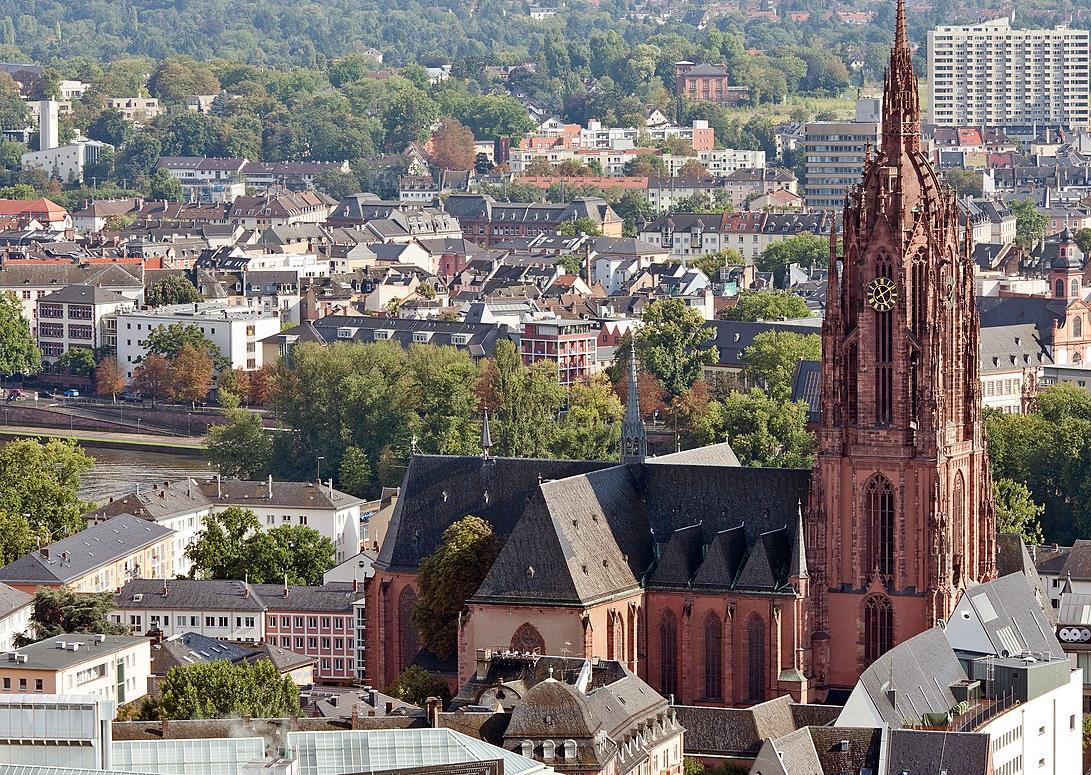
Frankfurt Cathedral
• Frankfurt Cathedral is the largest religious building in the city, it was also a former collegiate church. Despite it being called a cathedral in English this is not technically true.

• It is actually a Kaiser Dom or ancient imperial great church. The current building is the third church built on the same site and was completed around 1550. Frankfurt Cathedral was seen as a symbol of unity for Germany, notably during the 19th Century.
